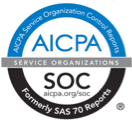As business leaders navigate the post-COVID-19 landscape, they are finding that traditional office and workforce models have changed forever. Companies that had diligently thought out their five-year plans are having to start over because the constraints that resulted from the COVID-19 crisis were unimaginable before the pandemic hit. Ironically, while the core business values of collaboration and teamwork are essential to the success of most businesses, physically being together is now fear-provoking. We must find a new way to work. In an instant, corporate priorities have shifted and corporate goals must be adjusted. The crisis has had the greatest impact on the three largest cost centers of most organizations: People, Corporate Real Estate, and Technology. As business leaders reassess their plans and chart a new direction, data will be foundational to making informed decisions.
What will post-COVID-19 office and workforce models look like?
Much like the 9/11 terrorist attacks, the COVID-19 crisis is a tragic defining chapter in history that has changed the world we live in forever. Almost two decades after 9/11, we can’t imagine going back to a world without TSA airport security screening, guest registration, and see something, say something. Going forward, we will not be able to envision office space or workforce models that don’t allow for social distancing. The economic toll of this crisis poses a sense of urgency and those who aren’t reassessing their office and workforce models now, are at great risk of being left behind. Business leaders must determine what metrics matter to them. Then they must measure, investigate, and act.
People
The COVID-19 crisis forced many companies to begin operating remotely with very little warning. After making this transition, many companies will choose to operate this way going forward in some capacity. Businesses must measure engagement and productivity to determine how they can help their employees ensure their well being and excel at their jobs despite the uncertainties of the new environment. There are many ways to measure how employees are faring and all require data:
- Volumes and activity: Measuring the increases or decreases in volumes and quality of key activities at a macro level for items like e-mails, CRM activity, instant messaging, conference calls (video and web), and file storage will provide insight into how the nature of work has changed and if there is engagement within the organization and with customers.
- Workday changes: Measuring the hours when activity occurs can provide insight into how people’s behaviors have changed and what might be required to support these new behaviors. Working from home is new to many employees. Many are finding that they are more productive at home and work more hours while enjoying greater flexibility. The change in the commute, out of office travel, and face-to-face meetings all have impacts on the workday.
- Other relevant metrics to consider: Pipeline, responsiveness to customers, product availability, and system utilization.
Corporate Real Estate
Organizations should heavily scrutinize their corporate real estate needs. The need for conventional office space is no longer a “given” as some companies will move to a more virtual presence. The post-COVID-19 corporate real estate landscape will reflect a dramatic change:
- Social distancing is now a top priority planning constraint.
- Maximizing “people per square foot” is no longer an acceptable goal for optimizing office space.
- Organizations that retain conventional offices must reconfigure once densely occupied open space plans and develop blueprints for each of their locations to limit density and handle communal space like conference rooms, cafeterias, lounges, and printing stations.
- A shift of employees located at large, central downtown offices to small, satellite suburban offices will drive changes to the real estate footprint and add complexity.
- In coordination with building managers, companies will have to figure out how to handle office access for the new flow of people. They may need to invest in new technologies and processes like touchless elevator technology, temperature screening for employees and visitors, and entry and egress patterns.
- Some employees will return to offices in shifts with staggered office days by team or function to lower daily headcounts.
- People will learn to plan their schedules better, stacking meetings on office days.
Gaining a true understanding of occupancy, structure, and how teams will work together will be critical for businesses. This will require data.
Technology
The COVID-19 crisis forced many companies to accelerate their digital transformations and spend money on technology and infrastructure that they had not budgeted. The cost of outfitting employees with laptops, software, web conferencing, and monitors was not planned. The ability to securely access systems and files from remote locations was not considered. The acceleration of change to remote work will drive a different timing of investments and open up opportunities for savings. Knowing the impacts and understanding the steps will be critical in getting this right. Businesses should re-evaluate their IT spending to minimize redundancies and unnecessary costs such as networks, data centers, and internet access, equipment, software, etc. This evaluation will require data.
Operational Analytics
When it comes to navigating the post-COVID-19 environment, crucial data is needed to inform business decisions regarding future needs for People, Corporate Real Estate, and Technology. Because this pandemic is unique in its reach and scope, it may be difficult for businesses to know what the appropriate datasets are, how to source them, and how to effectively analyze them.
Operational Analytics is a solution that can help businesses turn data into knowledge used to make informed decisions. Using a proven operational analytics model enables a business to rapidly integrate, analyze, and correlate multiple datasets to extract key insights that validate areas of opportunity and allow leaders to implement the right solutions at the right time. With data-backed insights at their fingertips, business leaders will be better equipped to prepare their future office and workforce models in a post-COVID-19 business environment.
For more information on how we can help you prepare your corporate office and workforce models, please contact us.




